The event organized by FSC Ukraine with the assistance of SFE “Forests of Ukraine”, National University of Life and Environmental Sciences of Ukraine and the Ukrainian Research Institute of Forestry and Forest Melioration, brought together a wide range of participants: forestry practitioners — employees responsible for forest certification at the SFE “Forests of Ukraine” from the head office, regional branches and forestry management units, specialists of PA “Ukrderzhlisprojekt”, representatives of non-governmental organisations — WWF-Ukraine, NGO”ForestCom”, certification bodies, scientific and educational institutions.
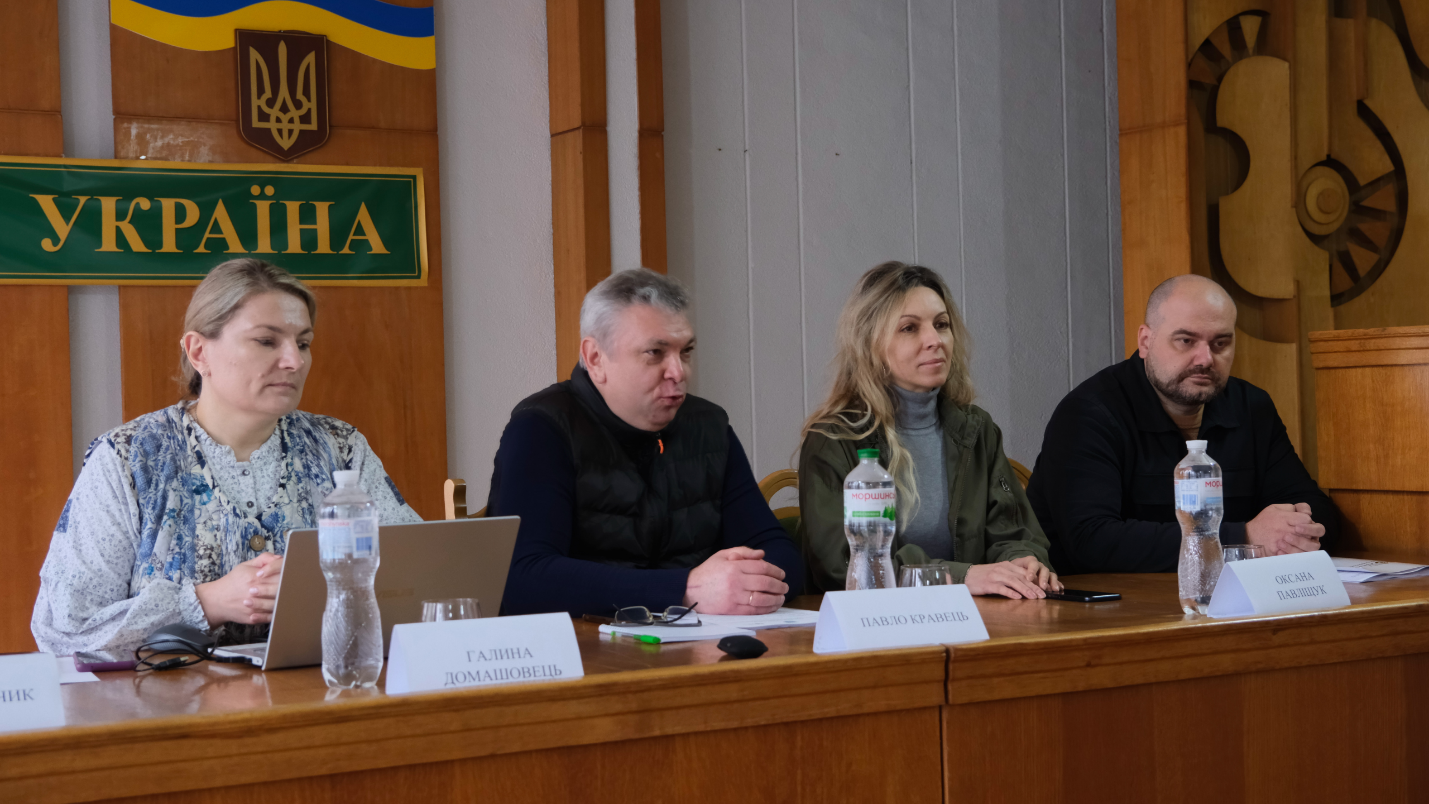
Representatives of the workshop organisers. Photo: © FSC Ukraine
The workshop participants focused on best practices in responsible forest management, namely those associated primarily with the FSC standard for Ukraine, according to which 4.65 million hectares of forest (46% of the total forest area) had been certified in Ukraine as of the end of May. United by a desire to enrich and exchange experiences on representative sample areas of native ecosystems (RSANEs) and high conservation values (HCVs), forestry workers and stakeholders discussed best practices for implementing the standard's requirements for these environmental values.
The procedures developed by FSC Ukraine experts for effective management of RSANEs and HCVsin accordance with the FSC standard for Ukraine have been tested in several forestry management units of the SFE "Forests of Ukraine" are the result of a three-year project aimed not at technical operational changes in the management system, but at profound transformations in the approaches of forest managers for the long-term preservation of ‘living laboratories’ for future generations, while satisfying the economic interests of society.
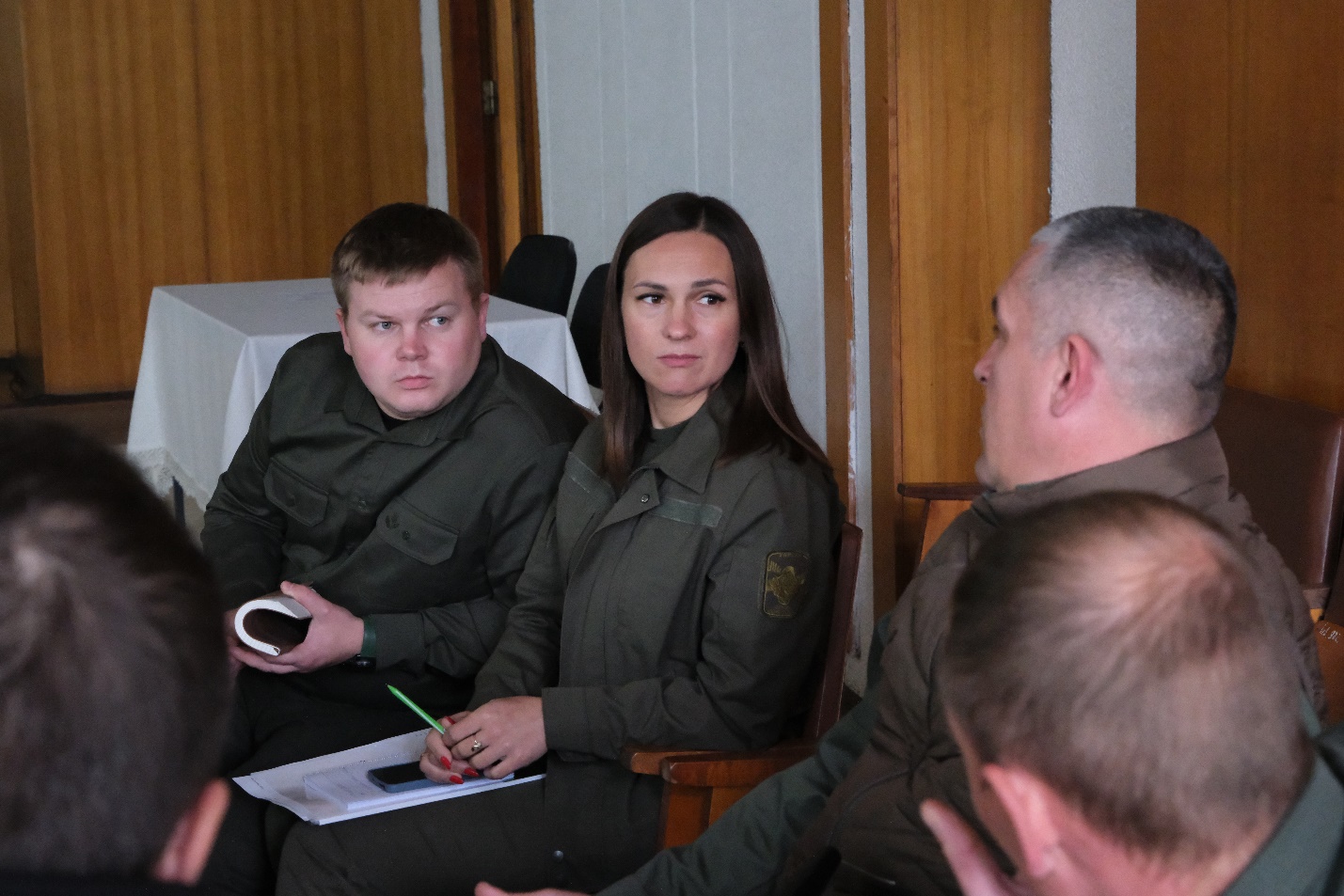
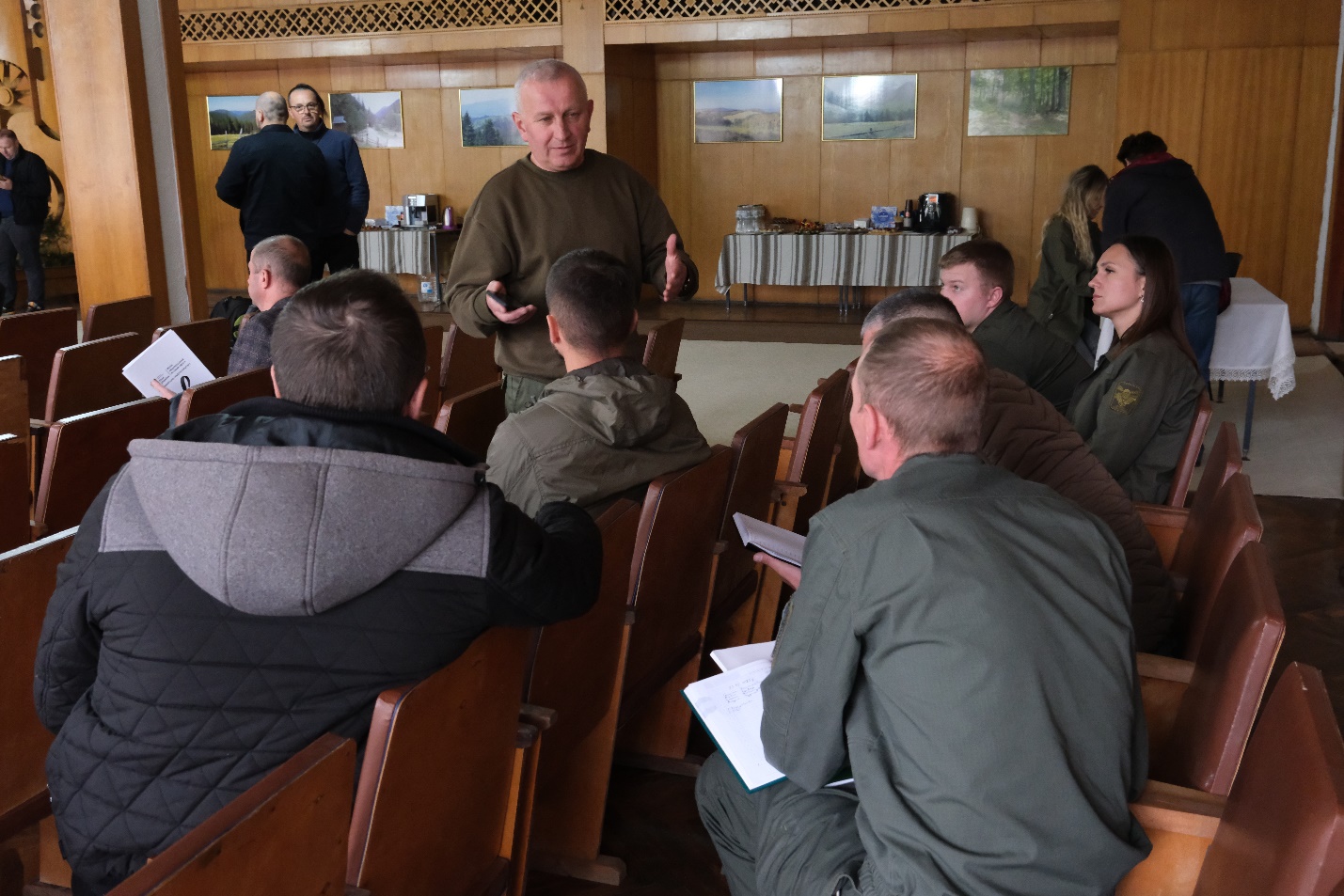
Working in groups on appropriate adjustments to the management system for FSC certificate holders, taking into account best practices. Photo: © FSC Ukraine
Commitment to FSC values and the willingness of FSC certificate holders to continuously improve are key factors for positive change in forest management systems. Workshop participants recognised that the existence of such clear procedures significantly improves the organisation of management and production processes for compliance with the FSC standard for Ukraine, defining strategic vectors and tactical directions for decision-making on the specified elements of environmental values. The result of integrating procedures into the management system and farming practices demonstrated by the Kolomyia Forestry Management Unit was convincing in this context. Systemic changes in approaches to identifying, assessing and monitoring RSANEs and HCVs, along with a clear division of powers and responsibilities within each of these processes, have demonstrated the practicality of this expert work and the possibility of its dissemination in the country's forestry sector.
Pavlo Kravets, FSC Ukraine National Representative of, emphasised the importance of the work carried out: “It is gratifying to note the success of our joint efforts, because at the beginning of the project, our experts talked about various aspects of identifying, assessing and conserving RSANEs and HCVs, and today we hear from key staff members how these requirements are being implemented in practice as part of the daily work of staff and established procedures.”
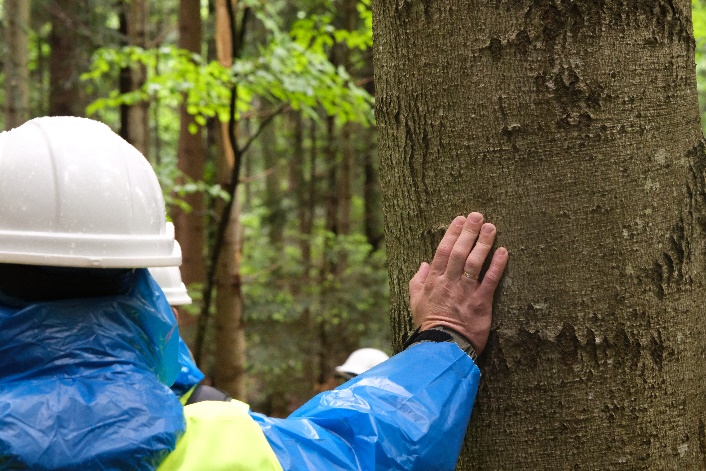

In the forest beech genetic reserve. Photo: © FSC Ukraine
The opportunity to visit several RSANEs and HCVs as part of the workshop and to see and discuss first-hand the improved approaches to their management, taking into account the procedures, reinforced the workshop participants' conviction of the necessary changes at the level of economic units and the important institutional improvements that will facilitate them. In particular, attention was focused on the genetic reserve of the forest beech, a group of beech forests dominated by common ivy, listed in the Green Book of Ukraine, as well as a quasi-primeval forest formed by silver fir (Abies alba). Each of these areas is particularly valuable and represents native ecosystems. For example, the natural monument ‘Quasi-primeval forests of the Liubizhniansky Forestry’ deserves special attention. It is a 97.7-hectare site of quasi-primeval forest, formed mainly by silver fir trees over 150 years old. This site is impressive not only for its size and the age of the trees, but also for the successful natural regeneration of fir trees. In addition to belonging to the HCVs, the quasi-forest is also considered a RSANEs due to the absence of alien species, the presence of dead wood and other features that determine the need for a special protection regime to preserve the unique natural structure of the site and its biodiversity.


Preliminary natural monument of local importance ‘Quasi-primeval forests of the Lyubizhnyansky Forestry.’ Photo: © FSC Ukraine
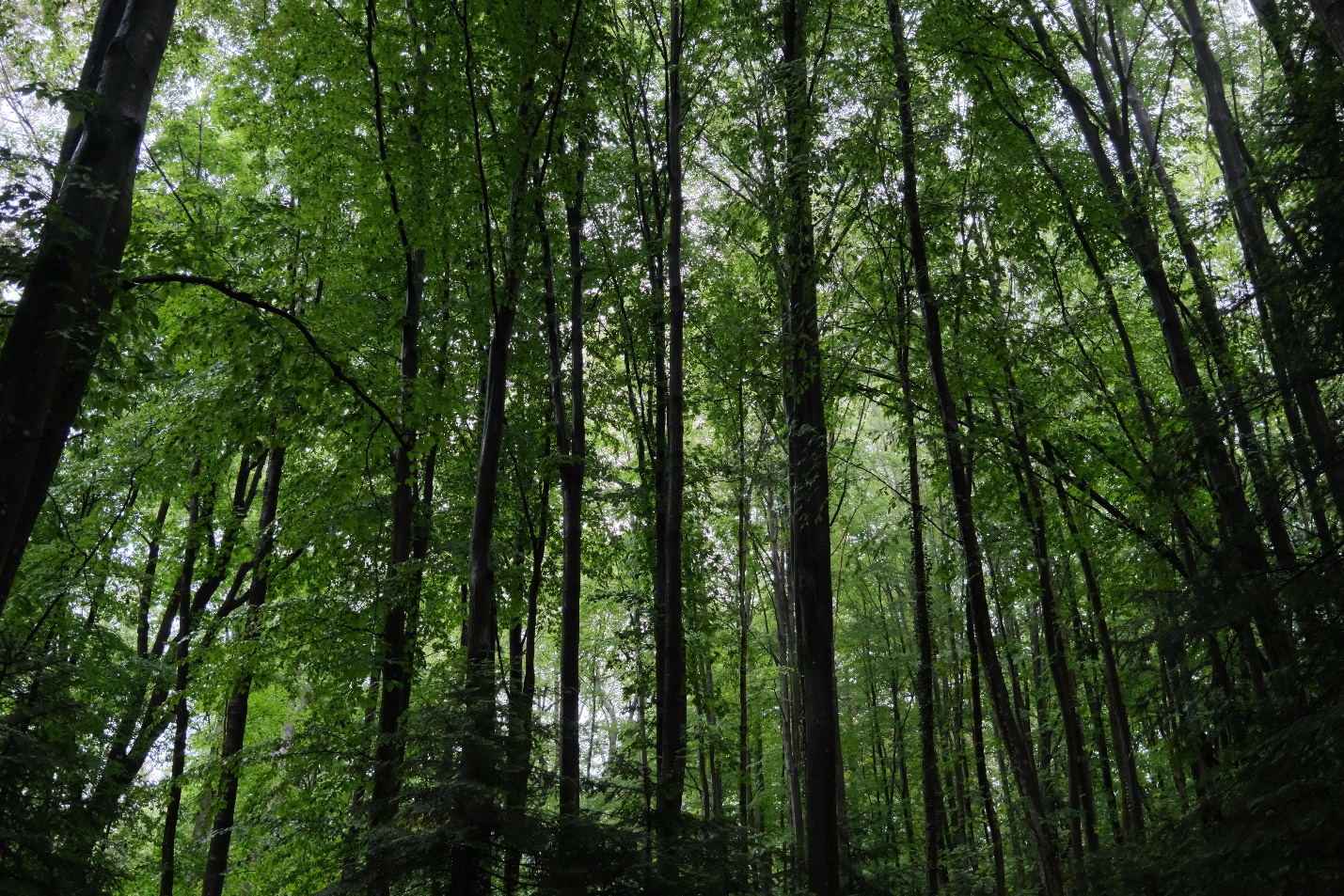

A group of beech forests dominated by common ivy Photo: © FSC Ukraine
As noted by Halyna Domashovets, Head of the Forest Certification Sector, Department of Forest Management, SFE “Forests of Ukraine. : "The project on best practices has once again proven that the close link between the practical experience of our foresters and the scientific approach of experts is key to responsible forest management. The combination of forestry experts' knowledge and experience with expert vision allows us to develop effective procedures that transform valuable forest areas into sustainable ecosystems capable of responding to today's challenges, including climate change.”
Overall, the results of the three-year project on best practices in responsible forest management and the opportunities gained for disseminating them among FSC certificate holders in the Carpathians and other regions of the country clearly demonstrated how effective changes in management and production processes bring forest certification values closer to reality.
Oksana Pavlishchuk, coordinator of the project on best practices in responsible forest management at FSC Ukraine: “Step by step – from analysing forest management to developing expert recommendations on best practices and testing them – the project team worked hard to achieve a successful outcome. It is measured primarily by the changes that foresters initiate in their structural units to integrate best practices into the management system and forestry practices. The project should be continued by scientists and all stakeholders who care about the values of forest certification as part of their worldview.”
It is this close relationship between science and practice that allows us to find answers to contemporary challenges together, while the systematic application of best practices in responsible forest management lays the foundation for sustainable forestry development in Ukraine.

